It was a hectic winter of speaking at fly fishing shows and clubs. I love doing these events but I squeezed in a few more than an insane man would have. That being said, my shows went well. Perhaps that’s because I knew there was a very bright light at the end of the tunnel.
An hour after my last gig at the Midwest Fly Fishing Show in Detroit I found myself bound for Gabon. Gabon is a country exactly under the equator on the west coast of Africa. It’s one of the wildest pieces of Africa left and home to some of the best National Parks. The stunning coastline is also home to a rarely heard of fish species, the giant African threadfin.
I learned of the giant African threadfin in 2010 when filming in Tanzania for the tigerfish piece of the Confluence film, Connect. The Africans that hosted us were the founders of Tourette Fishing – Fight it in Africa. Tourette specializes in off the grid fishing destinations in Africa and a place they were pioneering at this time was Gabon. Although they were heavily targeting the tarpon of Gabon, it was the threadfin that was raising some eyebrows.
After seeing my first photo of the giant African threadfin I knew I had to catch one on the fly. My friends at Tourette weren’t so sure my wish could come true. They didn’t know heaps about this unusual fish and the ones they caught came on huge plugs on long casts off the beach. Reaching them with a cast let alone tossing a fly big enough to fool one seemed unlikely. But the more I heard the more my desire to catch one grew.
My friends held off the idea of inviting fly fishers for the simple sake that if a group went and had bad fishing it makes the destination look poor when really it is paradise for plug fishing. But while spending time in South Africa in December with Tourette, I was given the good news that I was invited on the first ever fly fishing only trip to Gabon!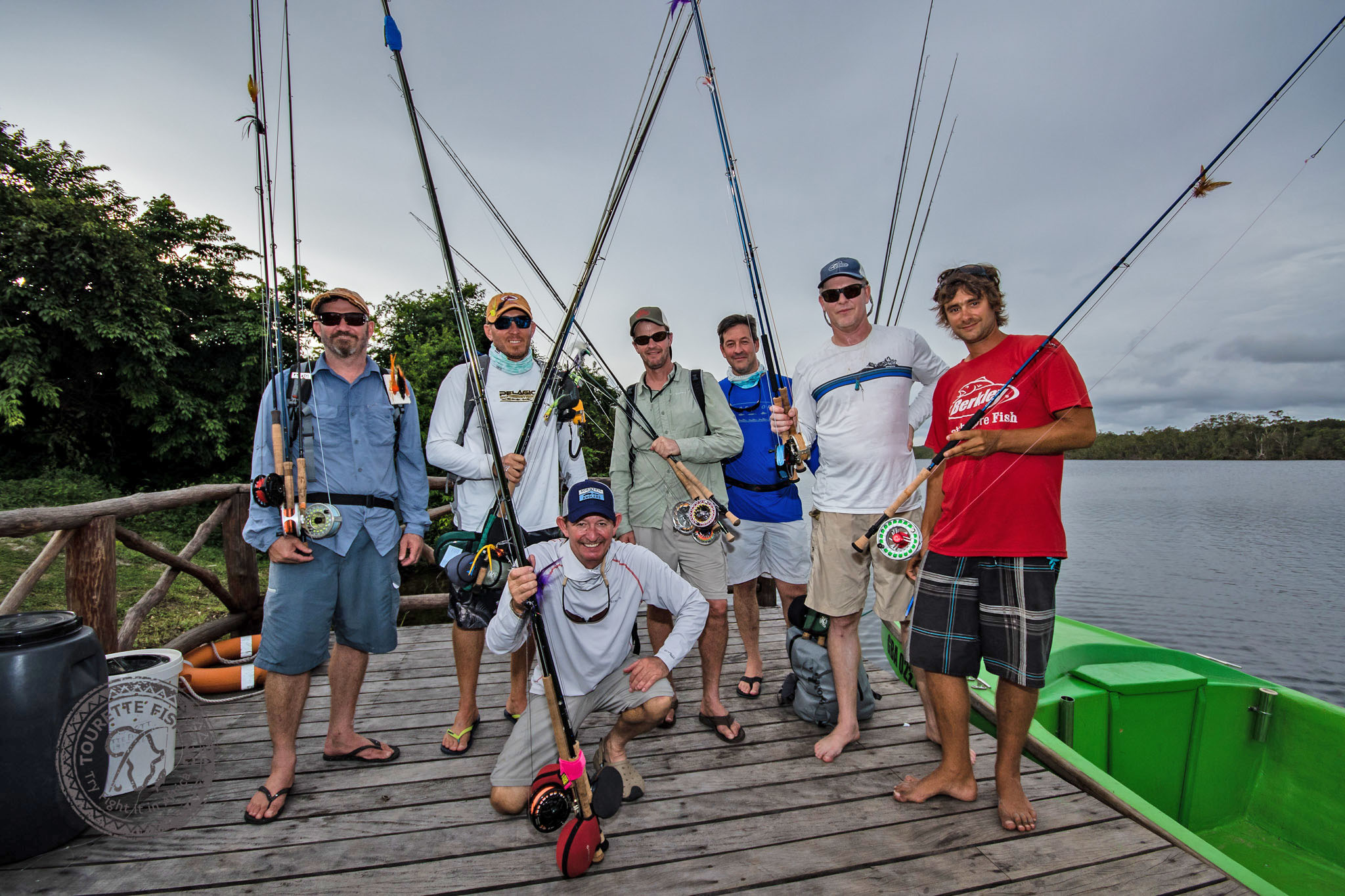
If you look at a map of Gabon we were on the southern coast exactly at the border of Loango National Park. It’s a long way from Idaho and takes a few days to adjust to the time change. It was miserable waking up at 4:15 AM for our first full day of fishing. But then I realized I was fly fishing in Gabon and my coffee stimulated my brain on the 20-minute boat ride to the mouth of the estuary where most our fishing took place. 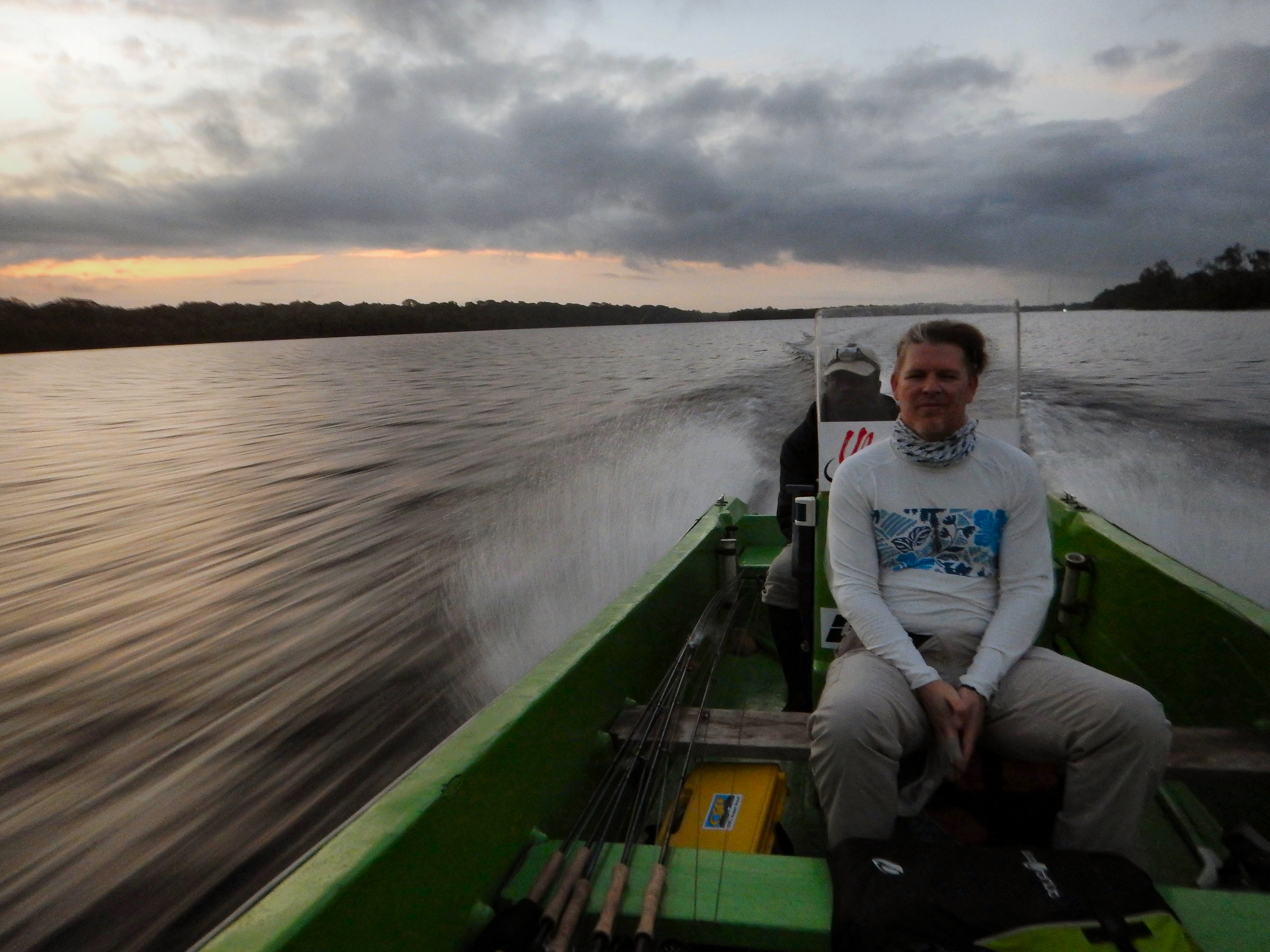
It was plenty dark when we arrived. The winds were soft and the surf and waves easy to handle. The skies were full of puffy tropical clouds and moon and stars poked through every hole.
It’s difficult to pack for a fish that few have ever caught on fly. In the five years developing the Gabon fishery there have been zero threadfin caught on the fly. There were lots caught but only on plugs. Over the years I’ve gathered plenty of info as to what plugs worked and where the fish feed but other than that I was winging it for the fly. I began my quest with my Winston 12-weight Boron III Plus, a 550 grain sinking line, a large black and red Whistler and plenty of backing.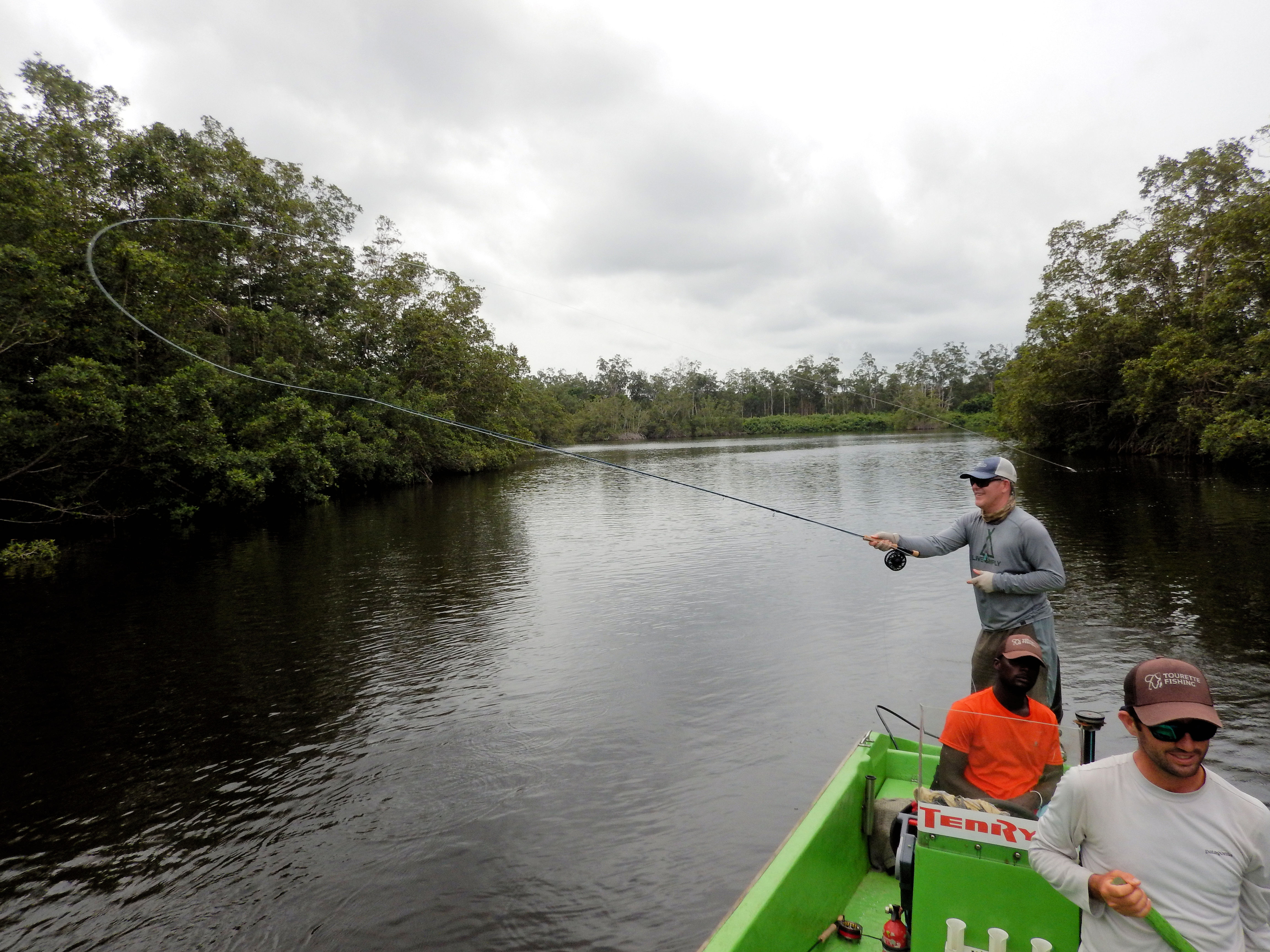
The morning session proved successful for some but unfortunately not me. I casted relentlessly for three hours without a tap but must admit I was daydreaming too much from jetlag. One of the South Africans met his goal by landing a tarpon (the battle was a sight to behold!) and a couple of longfin jack crevalle were landed as well.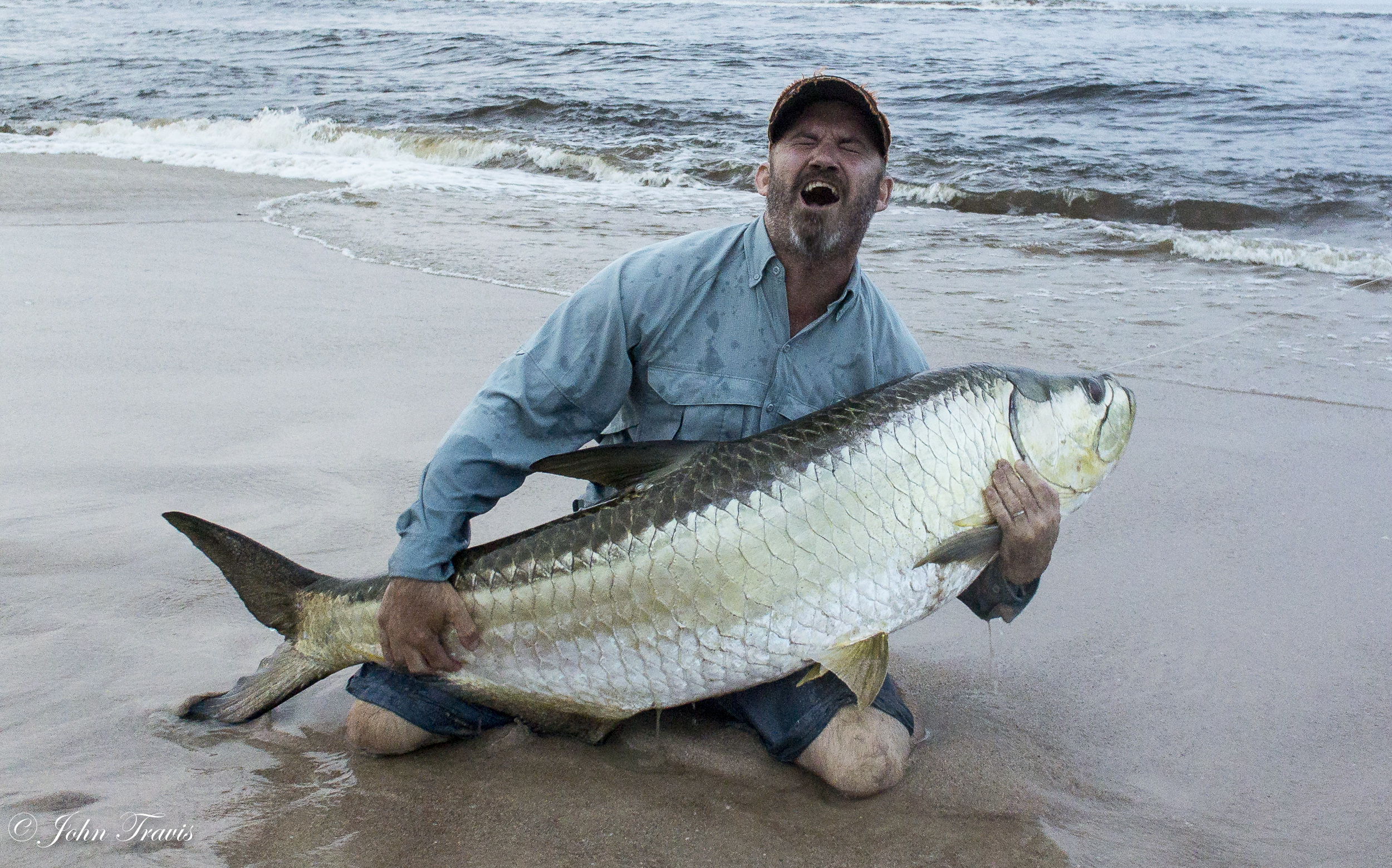
By 7 AM the tide was useless for fishing the estuary mouth. Our host and longtime Tourette fishing guide, Mark Murray, knew 7 was the end so he had a plan and we paired up in the boats and headed in the estuary to fish for snapper and jack. I picked up my 9-weight Jungle Rod and heaved some Clouser’s at the mangroves from the front while Mike did the same from the back.
There was action on almost every cast with snappers and grunter. I added two new species of snapper to my list, the African cubera snapper and gorean snapper. This cubera was respectable on a 9-weight but they get much larger. I also added the Guinean barracuda to my species list. This species gets gigantic. Unfortunately, the aggressive fish have made themselves too vulnerable in west Africa and the big boys are rare these days. 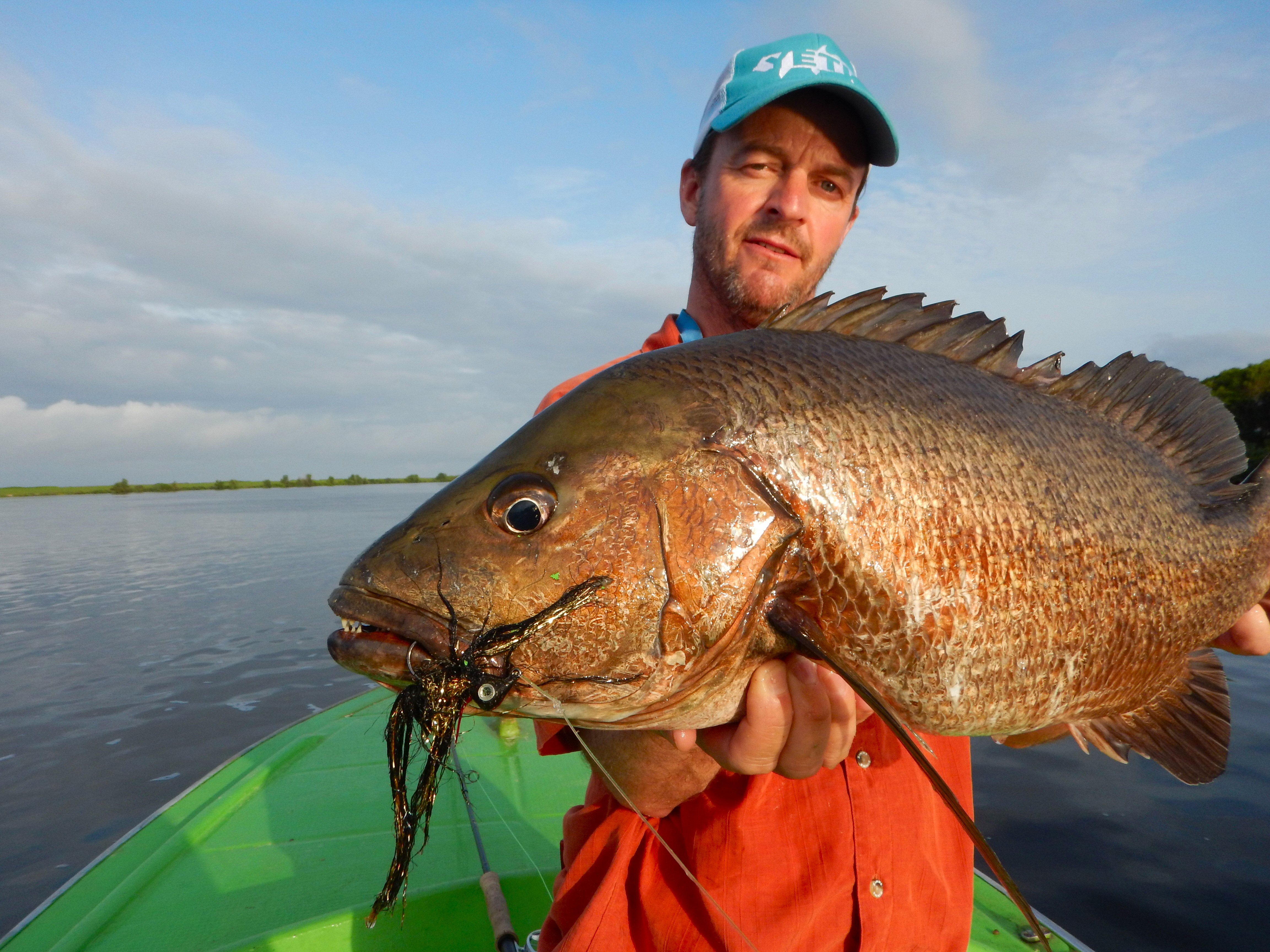
We packed in the morning session around 11 and headed for camp for lunch and beers. I adjusted my beach set up while the South Africans tied flies. The fun breather lasted until 4 PM when we left for the evening session during prime tide.
There’s a ton of wildlife in this area including lowland gorillas and chimpanzees. I can’t tell you how cool seeing one of these primates would be. The chances are slim though because they’re wild and have more jungle to hide in than anywhere. There have been lots of elephants however enjoying the estuary and we saw several on the boat ride to the fishing tonight. These are a smaller African species called the forest elephants. Last night we had two walk right out on the beach while fishing.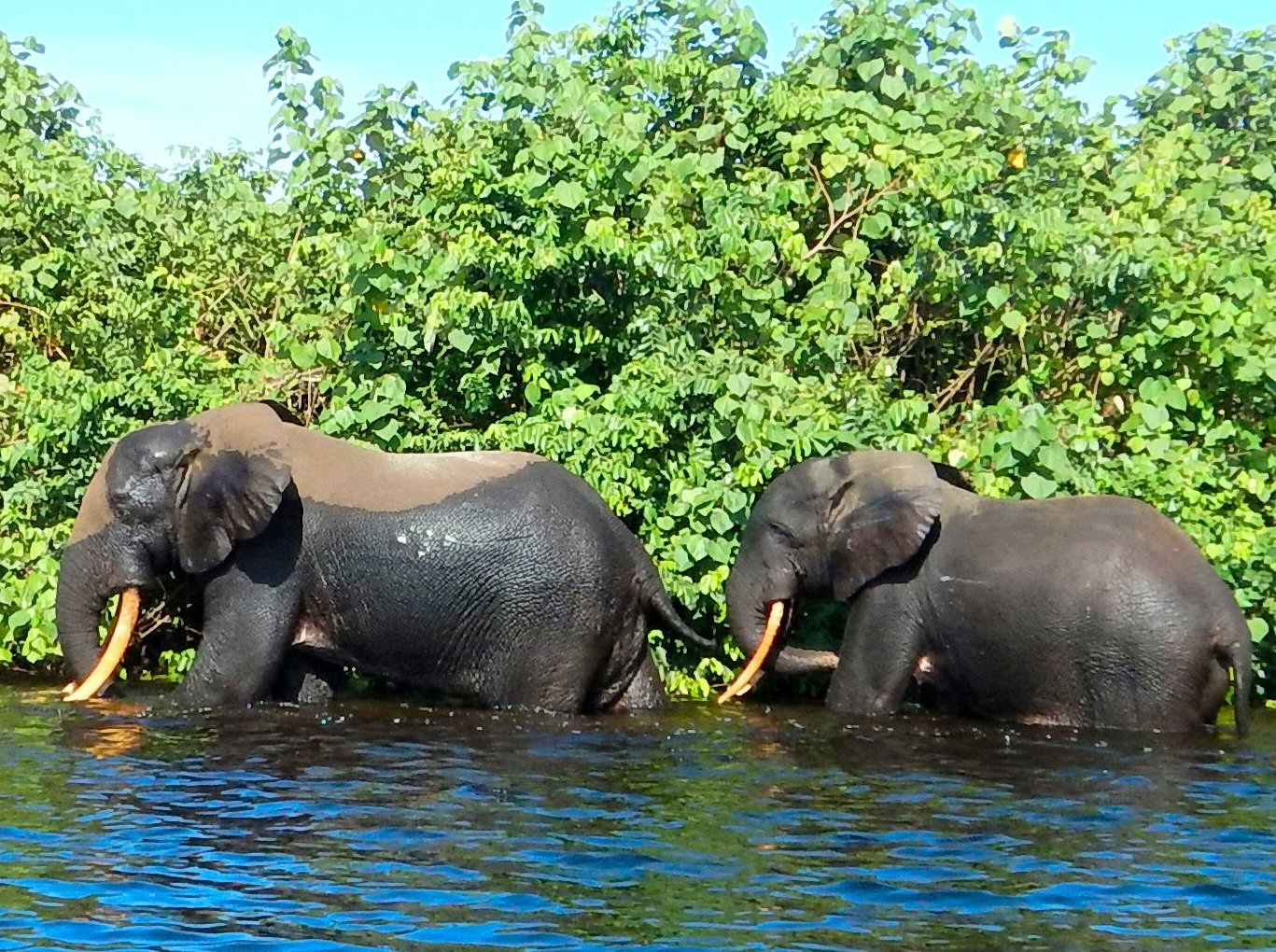
The evening was nice on the beach at the mouth of the estuary. There were a few rolling tarpon we couldn’t reach and Garth Wellman took down this enormous Longfin Jack. But this brute was our only fish in daylight. Things got so slow that we considered calling it an early night until Mark assured us after dark is the best time for my dream fish, the giant African threadfin.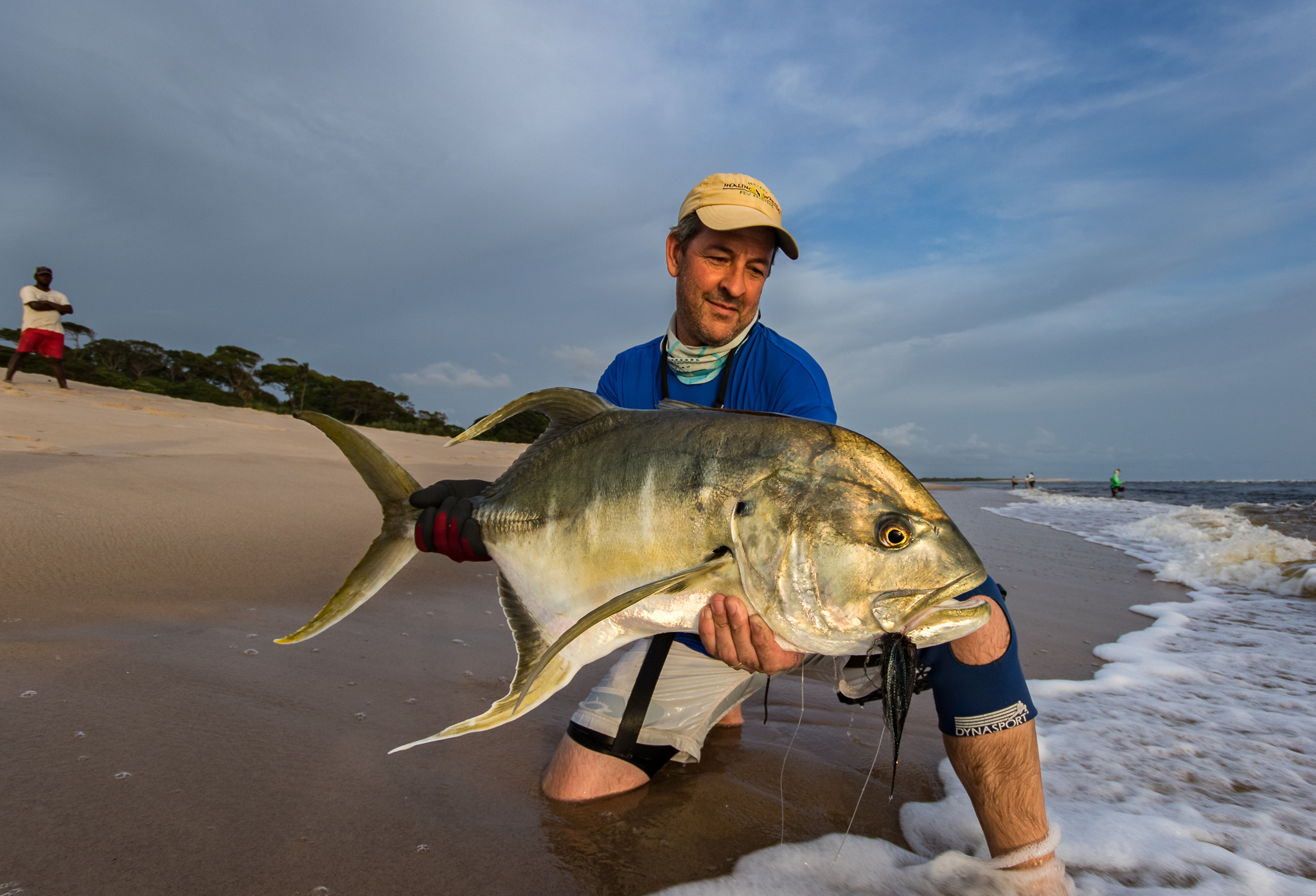
It was dark before 7 and that’s when the relentless blind casting began. Six of us lined the beach around a point where the water rushes past in the dropping tide. Mark feels the threadfin are mostly deep and far from the beach except every once in a while they move close and this is the spot. The problem is keeping a fly down deep in the zone for more than a few seconds. The tidal current rips so hard that even with my 550 grain sink fly line the fly gets swung back to the surface too fast. I envision literally needing to bump a threadfin in the nose in those short seconds much like hitting the lottery.
My technique was cast as long as I could which isn’t far with a 550 grain from a beach at night. Then mend some slack line out as the system sinks. The second I felt the current swing against my fly line I made a strip then fed it back out. Then another and another but by the time there was hope for a fourth strip and feed my fly was slamming into the beach down current. You can see how short a time the fly is in the zone.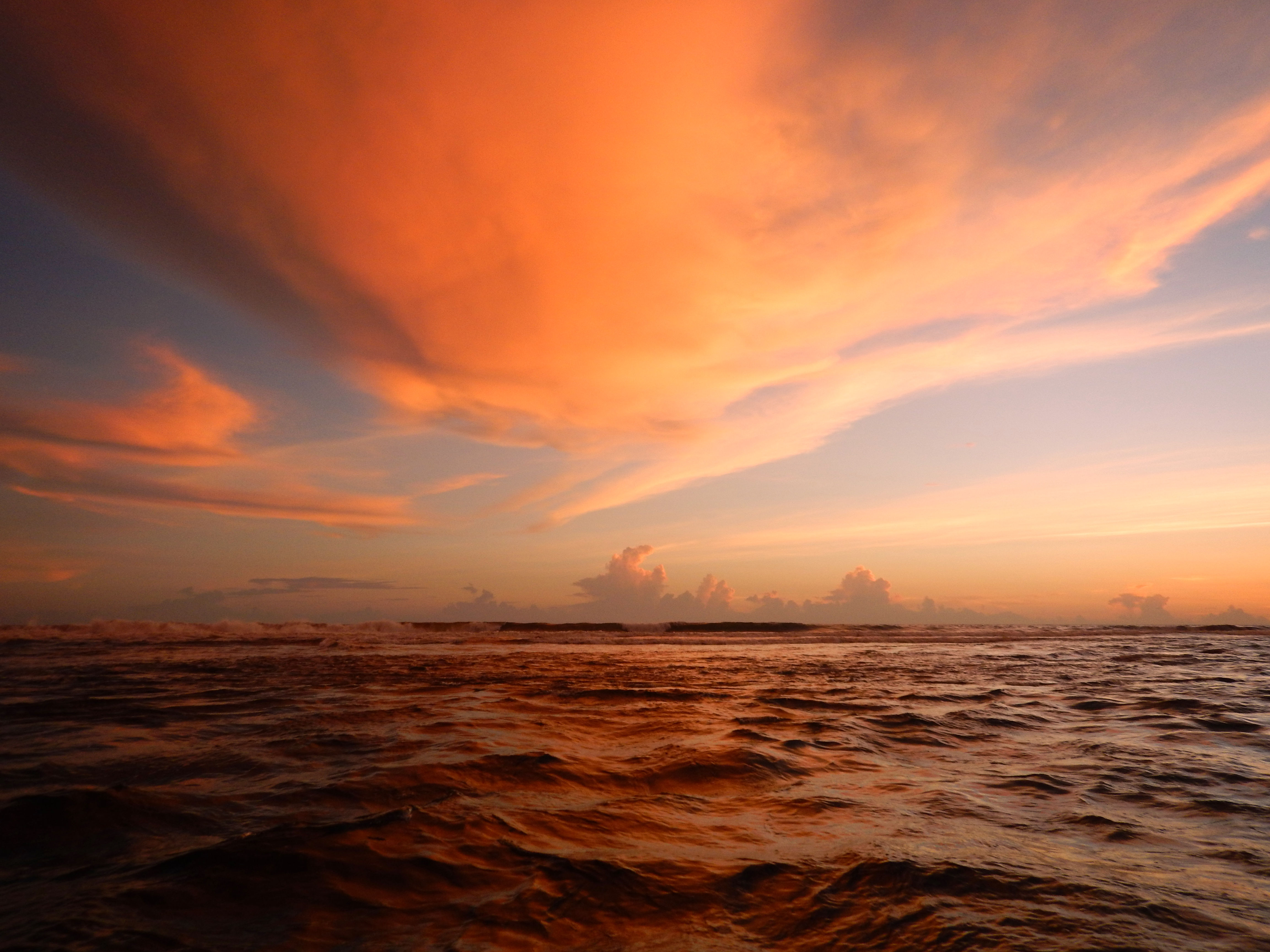
If you know me however, you know I’m a believer and my persistence is that of an insane man. I traveled 9,000 miles for a threadfin and dang it I’m not going home without a fight. At 9 PM, two solid hours of relentless casting in the dark began to wear on me. It was so black I simply stared at the opening of my stripping basket being sure my strips of line made it in there for a productive next cast. Honestly, I was falling asleep standing up in thigh deep water.
Forty feet away I could make out the silhouette of another angler and slightly further I thought I could see the next. I made a deal with myself to be the last guy to call it quits but dang everyone was fishing hard. At last, I could hear the South Africans chatting. Their silhouettes met and up the beach they went. The night was coming to an end. 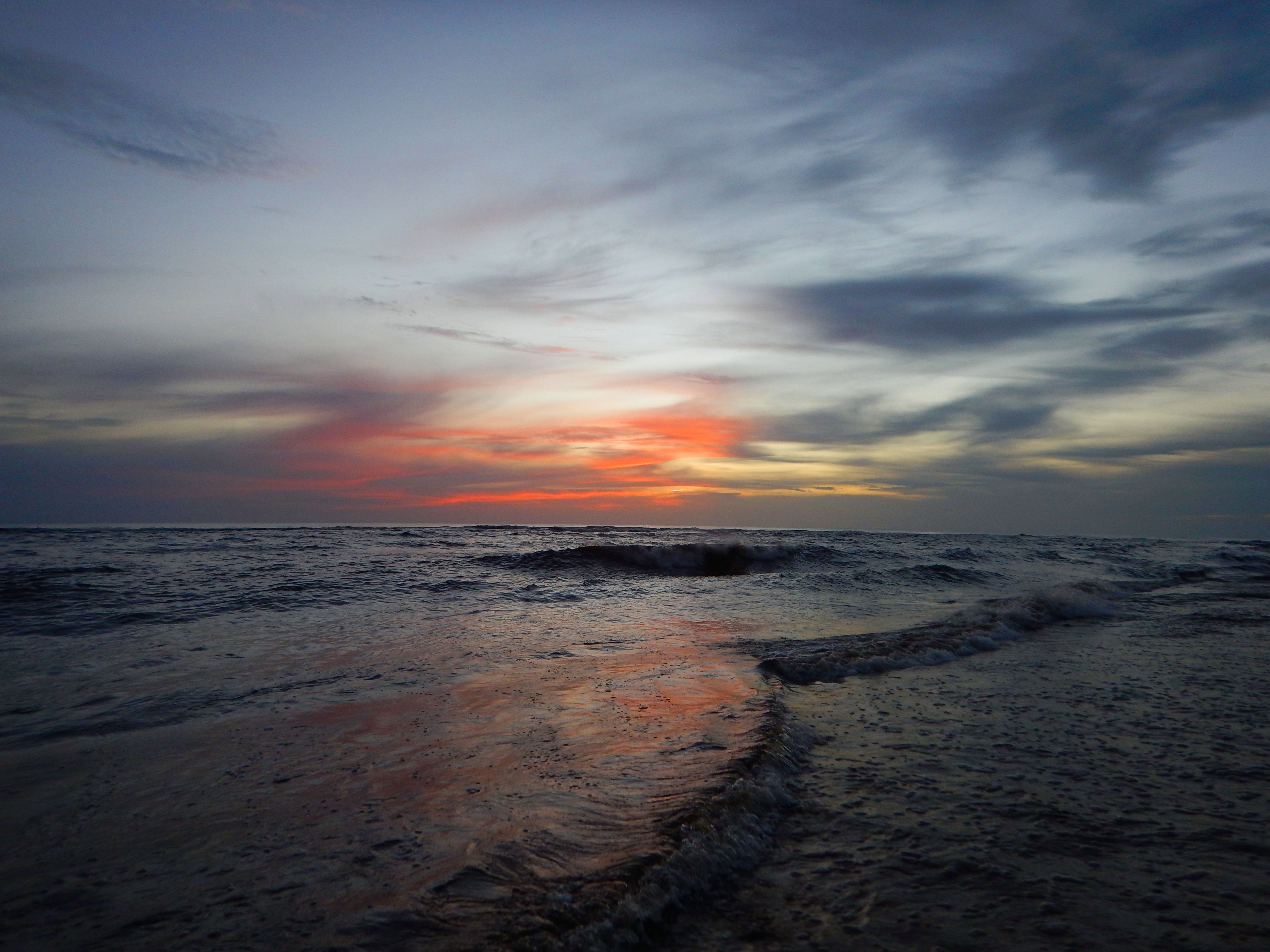
I told myself ten more casts, something I’ve been doing at the end of every hard fishing day since I was a kid. On my third cast my heavy fly got hit with the strangest thump I’ve ever felt from a fish in my life. So strange that at first I wasn’t sure it was a fish. But after a good strip set and a lift of the rod without any doubt it was a fish. The strange thump was followed by heavy and violent headshakes. The kind that severe a 40lb tippet. The kind of power that if you’re squeezing your rod to tight the thrust could break your wrist (very few anglers have any idea what I’m talking about but I promise you it’s true). I just knew and yelled “Threadfin on!”
As the guys came around to see the fight the fish steadily cleared my reel of fly line. Luckily I was using my set up from this morning and my 12-weight was absorbing the strength of the fish. The run was powerful yet not speedy and my drag was tight and my backing crackled off the reel in a strange sound. Undoubtedly the fish had size. By now some of the guys suggested big snapper while others a jack, both of which I am more than familiar with their fights. I kept saying, “No. This is a threadfin”.
The hard pulling fish never went more than about fifty feet in the backing. He fought back and forth around this distance for a good five minutes. Then he started to give up. It was a huge relief when my fly line returned to the reel but it took another five minutes to get in my running line and finally see the sinking head of the line.
Ten minutes in the fish had taken me a hundred yards down the beach. Bad for me was here the surf was big and the beach was steep. I made my first attempt to surf him in on the beach but the lip at the sand drop was too much. The big fish, although tired now, anchored himself in the trough. Each time a big wave came I timed it to lift hard and the although the first few tries failed I could feel him start to budge.
The anticipation for everyone was no less than thrilling. While I still knew I had a threadfin the South Africans weren’t so sure. Finally, the wave I needed came just as the fish let go of bottom. I lifted and felt him give and with my rod over my shoulder pointed towards the sea I ran up the beach. The lunker of a fish rode the wave perfectly and when it receded the fish stayed on his side on the beach. A giant African threadfin on the fly off the beach!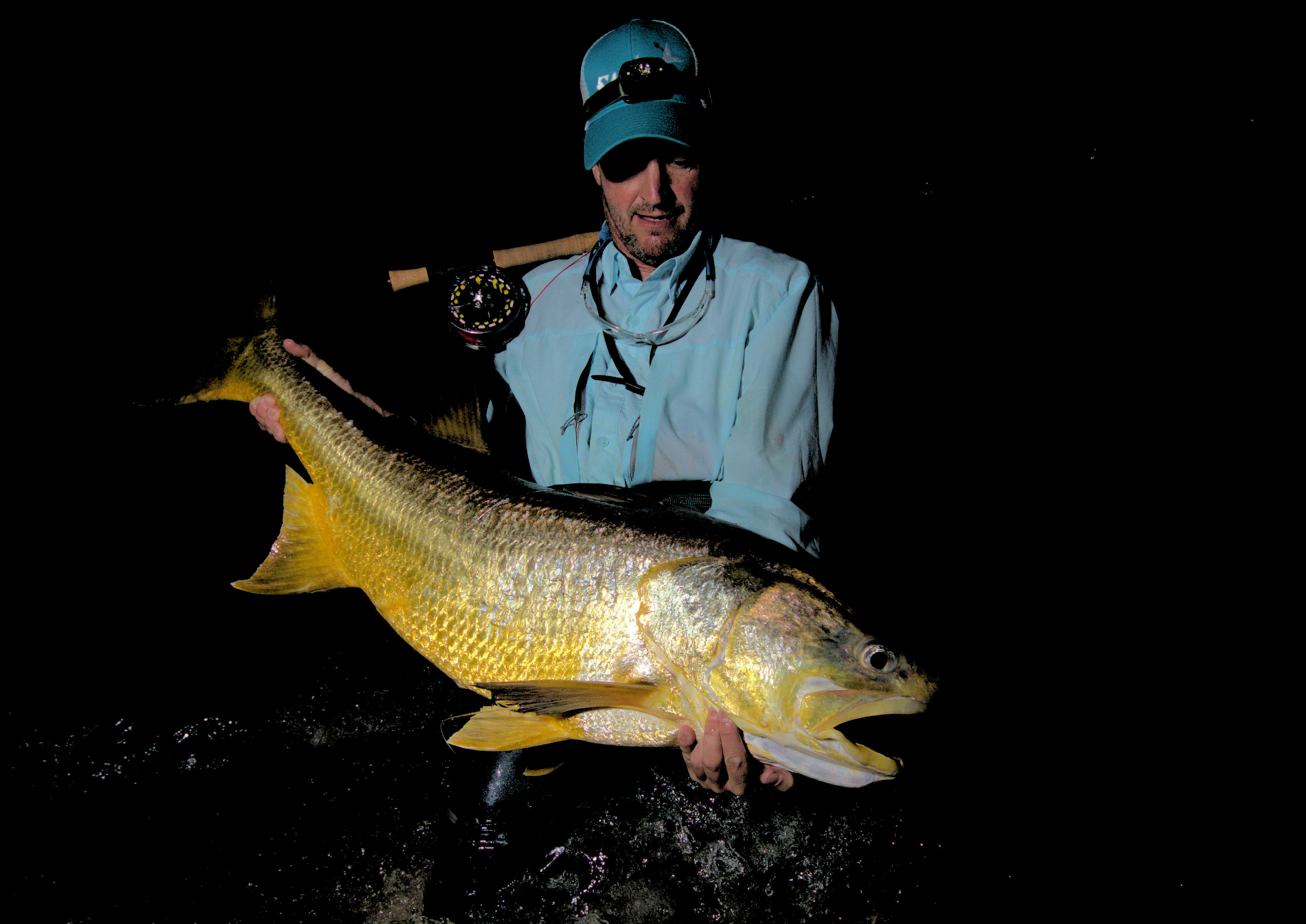
I ran down to see my prize and was in instant awe. This giant African threadfin was a giant! At first I could hardly handle him. His strength pushed me away twice before I finally got my hands under him enough to lift. He was easily 40 lbs!
I’d have thought differently but our host, Mark Murray, was quick to announce that threadfin are delicate and our photos session must take place fast. The last thing I wanted to do was hurt this magnificent creature any more so I lifted for a couple shots then pulled the fly and ran him down to the water. Waves crushed me at the edge of the beach drop but I held my breath and enjoyed the power of the Threadfin one last time as he yanked himself away with one swift kick of his massive tail. Mission accomplished!
As I look back few weeks later I can’t believe I’ve caught and held a giant African threadfin. You may think that because I caught this one on the first day that more would come. Instead, six carefully selected top fly fishers who put in over 300 hours of fishing, did not catch another threadfin off the beach. The only other caught came from a boat and he was less than half the size. It never hurts to be lucky in fishing!
See the day by day accounts and more incredible fish from Gabon at jeffcurrier.com.



